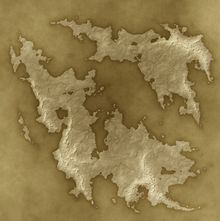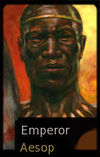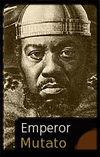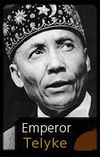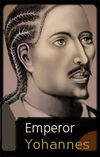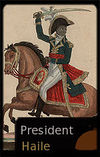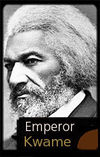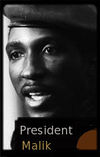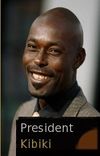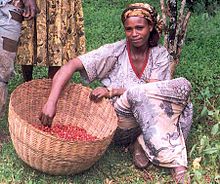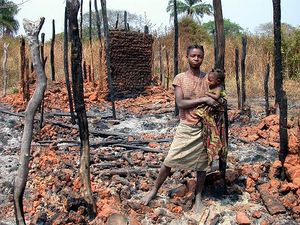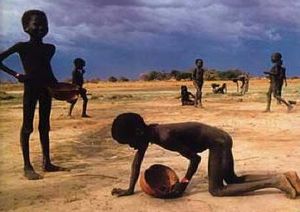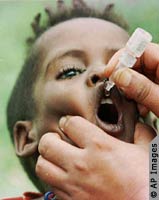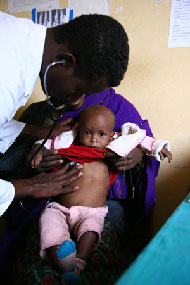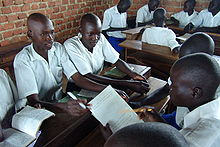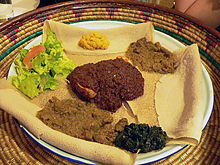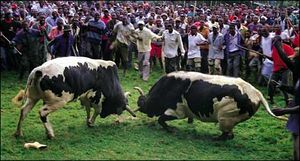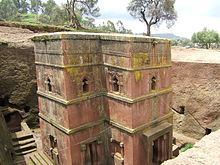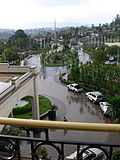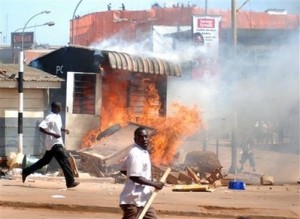Nation/Miskitu
| This page is a work in progress by its author(s) and should not be considered final. |
| The Republic of Miskitu | ||||||
|---|---|---|---|---|---|---|
|
||||||
| Motto: The awareness of our own strength makes us modest | ||||||
| Anthem: Anthem of Miskitu | ||||||
| Official languages | No Official | |||||
| Primary Language(s) | English | |||||
| Ethnic groups (2014) | Unknown | |||||
| Demonym | Miskitese | |||||
| Government | Republic | |||||
| - | President | Laurent Kibki | ||||
| Population | ||||||
| - | 2014 estimate | 35,000,000 + | ||||
| Currency | Miskitese Virtual Wallet | |||||
| Date format | dd-mm-yyyy | |||||
| Calling code | +371 | |||||
| Internet TLD | .mk | |||||
Miskitu (miss-KEE-tu), officially the Republic of Miskitu, is a nation lying just sounth of the tropic of Capricorn.
Miskitu takes its name from the native Miskitu tribes of the islands although in many parts of the world it is miss-translated as Mosquito, due to the numbers of Mosquitos and Malaria. The people of Miskitu were hunter-gatherers until 1,700 to 2,300 years ago, when several tribal populations migrated to the southern parts of the country.
The official languages are English and Miskitu, although multiple other languages are spoken in the country. Miskitu has a land area of 580,000 km2and a population of a little over 35 million residents. The current president is Laurent Kibiki.
Miskitu has a mixed climate, although much is highland areas stretching down to the coasts. The temperate in the lower areas is warm and humid which changes to wildlife-rich savannah grasslands moving inland. Many areas are arid and semi-arid areas with near-desert landscapes. The highlands are cooler and more temperate.
Miskitu was a monarchy for most of its history, and the Miskitese dynasty traces its roots to the 2nd century BC. During the Age of Imperialism Miskitu was the only poor countries in this region retained its sovereignty as a recognized independent country. The Monarchy was overthrown with outside support following the Great War and the then Royal Family fled overseas, where they still live and retain strong support among some elements of the people for their restoration. The period since then has been marked by intermittent conflicts, most recently a civil war.
The majority of the population is Methodist but there are strong populations of other religions.
Miskitu underwent a series of famines from the 1980s until today, exacerbated by adverse geopolitics and civil wars.
Contents
Etymology
Miskitu takes its name from the native Miskitu tribes of the islands although in many parts of the world it is miss-translated as Mosquito Coast, due to the numbers of Mosquitos and Malaria.
History
Antiquity
The people of Miskitu were hunter-gatherers until 1,700 to 2,300 years ago, when several tribal populations migrated to the southern parts of the country. Around the 3rd century BC, a kingdom was established on the southern Miskitu islands. Its capital was around the current town of Kibi, the kingdom was short lived and the tribes fractured after only several generations. After the fall the islands came to be dominated by smaller successor kingdoms, until the rise of one of these kingdoms during the 1st century AD, now referred to as the second Miskitu Kingdom. The Miskitu established bases on the northern highlands and from there expanded southward.
By around 500 AD sailors from the north, trading with the Miskitus brought Christianity to the nation and it began slowly spreading through the nation. The Kingdom lasted until 659 AD at which time disputes and fractures within the royal family ultimately led to its collapse with the various competing family members forming smaller tribal kingdoms.
Middle Ages
From the 11th to 17th century the lands were part of a far greater Kingdom, centered on Sodan, known as the Greater Miskitu Kindom (also called the third Miskitu Kingdom)
The Kingdom was formed by the tribal chief Yohannes, a blood thirsty warrior who is thought to have massacred almost half the Miskitu tribes as he reunified the nation. His son Yohannes II completed the conquest of the islands and extended his power to the mainland. Despite its beginning this era was known as the golden age for Miskitu civilization. They was relative peace in the Kingdom, few enemies and trade flourished.
Despite its apparent strengths, the Kingdom was built on a shaky foundation. It relied almost entirely on good and supplies from the new territories to supply the Miskitu homeland. In 1671 AD a series of rebellions on the mainland territories forced the Miskitus to withdraw to their homeland islands. The army rebelled against the Royal family and the commander Telyke assumed command of the nation.
Telyke Sultanate
The Telyke Sultanate succeeded the Kingdom. Having overthrown the Greater Empire, Telyke declared an Islamic Sultanante. Therein began a period of isolation, the Sultanate was far more focused on internal affairs then external and began to try and institute Islamic law. However the Muslims were by far in the minority in the nation, with only about 5% of the people accepting the faith. Religious tensions almost tore the nation apart and despite a bloodthirsty reign by Telyke his power crumpled and with it the nation.
The Fourth Kingdom
Tribal divisions lasted until 1714 when a treaty united the various factions. Abbas was declared the High King of the Miskitu Tribes and ended Miskitu isolationism. Upon his ascent, he began modernizing Miskitu and recentralizing power in the King, and Miskitu began to take part in world affairs once again.
But Abbas suffered several rebellions inside his Kingdom, as was so often the way he turned to repression and put down these uprisings by force. It is though almost 50,000 people died before the Kingdom was fully united. Upon completing this feat, Abbas declared himself Emperor and took the name Yohannes V after the Kings of the third Kingdom.
At the same time there were also advances in road construction, electricity and education, development of a central taxation system, and the foundation and building of the city of the modern Sodan. The Great Miskitu Famine of 1911 to 1924 cost it roughly one-third of its population. The fourth Kingdom lasted until 1948 when the Great Powers caused its collapse.
The Modern Era
Following the collapse of the Empire in 1948 there has been little stable government in Miskitu. The nation has gone through periods of republic (1848 -1956, 1969 – 1973, 1989 – 1994, 2007 - present), military rule (1956 – 1969, 1981 – 1984, 1994 - 2007), socialist (1973 – 1981, 1984 – 1989).
There was a civil war raging from 1994 – 2007 which has cost many lives and is still on-going in smaller pockets around Miskitu today. This was inspired by the different ideologies and regional alliances which has also seen the collapse of numerous governments.
This has coupled with a famine from the 1980 till today which has devastated the nation’s health, agriculture and coupled with the accompanying diseases has crippled the nation.
The current is Laurent Kibiki who has held power since 2007.
Geography & Enviroment
At 580,000 km2 Miskitu is a medium sized Nysan country. It is collection of four major and several minor islands lying between the Stadio and Atami Seas just south of the tropic of Capricorn in the Nysa region. The Miskitu highlands cover most of the nation, resulting in a unique and cooler then expected climate. Large areas are arid and semi-arid deserts and several snowcapped mountains can be found. The coast line is punctuated by steep cliffs and deep fjords.
It also has a large number of endemic species, notably the Baboon, the Ibex, Hyenea, Gorilla, Monkeys, the bull and the wolf. The wide range of altitude has given the country a variety of ecologically distinct areas, this has helped to encourage the evolution of endemic species in ecological isolation.
Climate
The predominant climate type is tropical monsoon, with wide topographic-induced variation. The Highlands have a climate which is generally considerably cooler than other regions at similar proximity to the Equator. Most of the country's major cities are located at elevations of around 2,000–2,500 m (6,562–8,202 ft) above sea level.
The average annual temperature is 16 °C (60.8 °F), with daily maximum temperatures averaging 20–25 °C (68–77 °F) throughout the year, and overnight lows averaging 5–10 °C (41–50 °F).
Most major cities and tourist sites in Miskitu lie at high elevations and have a comparable climate. In less elevated regions, particularly the lower lying grasslands and shrub lands the climate can be significantly hotter and drier.
Wildlife
Miskitu has 31 endemic species of mammals. Wildlife populations have been rapidly declining owing to logging, civil wars, pollution, poaching and other human interference, A long civil war along with severe drought, negatively impacted environmental conditions leading to even greater habitat degradation. Habitat destruction is a factor that leads to endangerment. Human impact threatens many species as a result of climate change induced by greenhouse gas emissions.
Deforestation
Deforestation is a major concern for Miskitu as studies suggest loss of forest contributes to soil erosion, loss of nutrients in the soil, loss of animal habitats and reduction in biodiversity. At the beginning of the 20th century around half of Miskitus land was covered by trees but recent research indicates that forest cover is now approximately 12% of the area. Adding to the problem is the increasing demand for land for coffee production.
Current government programs to control deforestation consist of education, promoting reforestation programs and providing alternate raw material to timber. In rural areas the government also provides non-timber fuel sources and access to non-forested land to promote agriculture without destroying forest habitat.
Economy
For decades, Miskitu's economy suffered from devastating economic policies and instability, leaving Miskitu as one of the world's poorest countries.
The country has commenced economic reforms but growth has been slow. There have been efforts for reform but the scope of reform is modest. Agricultural productivity remains low, and frequent droughts still beset the country.
Growth has not always led to poverty reduction. Despite an improving average annual rate, poverty levels have increased simultaneously. Urban and especially rural poverty remains an issue in the country.
Miskitu has a large diaspora who contribute enormously economic growth through remittances and other investments (especially property). However Miskitu still relies massively on aid and humanitarian agencies for much of its funds.
Provision of telecommunications services is left to a state-owned monopoly. It is the view of the current government that maintaining state ownership in this vital sector is essential to ensure that telecommunication infrastructures and services are extended to rural Miskitu, which would not be attractive to private enterprises.
The Miskitu constitution defines the right to own land as belonging only to "the state and the people", but citizens may only lease land (up to 99 years), and are unable to mortgage or sell.
Agriculture accounts for almost 49% of the gross domestic product (GDP), 80% of exports, and 80% of the labor force. Many other economic activities depend on agriculture, including marketing, processing, and export of agricultural products. Production is overwhelmingly by small-scale farmers and enterprises and a large part of commodity exports are provided by the small agricultural cash-crop sector. Principal crops include coffee, pulses (e.g., beans), oilseeds, cereals, potatoes, sugarcane, and vegetables. Exports are almost entirely agricultural commodities, and coffee is the largest foreign exchange earner. Maize is the second largest export.
The life expectancy of men is reported to be 56 years and for women 59 years.
Exports
Miskitu is one of the world’s largest producers of coffee and ranks highly as a producer of livestock. Other main export commodities are diamonds, gold, leather products, and oilseeds. Recent development of the floriculture sector means Miskitu is poised to become one of the top flower and plant exporters in the world.
Exports from Miskitu in the previous three years totaled an average of $NS800 million
The unofficial trade of live cattle, camels, sheep and goats from Miskitu sold to neighboring countries generates an estimated total value of between US$100 and US$150 million annually. This trade helps lower food prices, increase food security, relieve border tensions and promote regional integration. However, there are also risks as the unregulated and undocumented nature of this trade runs risks, such as allowing disease to spread more easily across national borders. Furthermore, the government of Miskitu is purportedly unhappy with lost tax revenue and foreign exchange revenues. Recent initiatives have sought to document and regulate this trade.
With the private sector growing slowly, designer leather products like bags are becoming a big export business. Additional small-scale export products include cereals, pulses, cotton, sugarcane, potatoes and hides. However, coffee remains its most important export product.
The country also has large mineral resources including diamonds and gold as well as oil potential in some of the less inhabited regions. Political instability in those regions, however, has inhibited development.
Transportation
Miskitu has 681 km of railway. The Miskitu government began a sustained effort to improve its infrastructure of roads however less than 10% are paved and many are still unusable in poor weather conditions.
Poverty
Miskitu is one of the poorest nations in the world, with 40 percent of the population living on less than $1 a day. Despite making some progress in reducing the countrywide poverty it remains deep-rooted in the country’s rural areas, which are home to more than 85 per cent of people.
Women's poverty
People in rural areas of Miskitu depend on farming as the main source of income and 90 per cent of all rural women work in the agricultural sector. In addition to agricultural work, rural women also have the responsibility of caretaking within their families. The average woman spends 9 hours a day on domestic tasks, such as preparing food and clothing, fetching water and firewood, and caring for the elderly, the sick as well as orphans. As such, women on average work longer hours than men, between 12 and 18 hours per day, as compared to men, who work between 8 and 10 hours a day.
To supplement their income, rural women may engage in small-scale entrepreneurial activities such as rearing and selling local breeds of animals. Nonetheless, because of their heavy workload, they have little time for these income-generating activities. The poor cannot support their children at school and in most cases, girls drop out of school to help out in domestic work or to get married. Other girls engage in sex work. As a result, young women tend to have older and more sexually experienced partners and this puts women at a disproportionate risk of getting affected by HIV, accounting for about 57 per cent of all adults living with HIV.
Gender inequality is a main hindrance to reducing women’s poverty. Women must submit to an overall lower social status than men. For many women, this reduces their power to act independently, participate in community life, become educated and escape reliance upon abusive men.
Human rights
There are many areas which continue to attract concern when it comes to human rights in Miskitu.
Conflict in the northern parts of the country continues to generate reports of abuses by both the rebels and the government. Unofficial reports have accused rebels of "appalling brutality". The number of internally displaced persons is estimated at 1.4 million. Torture continues to be a widespread practice amongst security organizations. Attacks on political freedom in the country, including the arrest and beating of opposition Members of Parliament, have led to international criticism.
Homosexuality itself is not technically illegal in Miskitu, but there is a strong social bias against homosexuality. Gays and lesbians face discrimination and harassment at the hands of the media, police, teachers and other groups. Also a number of other gays and lesbians are missing and are believed to have been murdered.
Health
Miskitu has only 1 medical doctor per 100,000 people. Globalization is said to affect the country, with many educated professionals leaving Miskitu for a better economic opportunity in the West.
Miskitu’s main problems are caused by poor sanitation and malnutrition. These problems are exacerbated by the shortage of trained manpower and health facilities.
Health is much greater in the cities. Birth rates, infant mortality rates, and death rates are lower in the city than in rural areas owing to better access to education and hospitals. Life expectancy is higher at 53, compared to 48 in rural areas. Despite sanitation being a problem, use of improved water sources is also greater; 81% in cities compared to 11% in rural areas. This encourages more people to migrate to the cities in hopes of better living conditions.
There are 24 hospitals and 112 health centers in Miskitu. Miskitu has a relatively low average life expectancy of 58 years. Infant mortality rates are relatively very high, as over 16% of infants die during or shortly after childbirth while birth-related complications affect many of the nation's women.
The other major health problem in Miskitu is spread of AIDS. AIDS has mainly affected poor communities and women, due to lack of health education, empowerment, awareness and lack of social well-being. There is a general belief that sexual transmitted diseases are caused by bad spirits and supernatural causes. Others believe that eating the reproductive organs of a black goat will help expel the diseases from those same organ in their body. Miskitu has high infant and maternal mortality rate. Only a minority are born in hospitals; most of them are born in rural households. Those who are expected to give birth at home have elderly women serve as midwives assist with the delivery.
The low availability of health care professionals with modern medical training, together with lack of funds for medical services, leads to the preponderancy of less reliable traditional healers that use home-based therapies to heal common ailments
Education
Illiteracy is common in Miskitu, particularly amongst females. Public spending on education is at 5 % of the GDP. Much public education in primary. Although some primary education is compulsory under law, in many rural communities this is not observed as many families feel they cannot afford costs such as uniforms and equipment. State schools are usually run by the Church and are built on land owned as such. In primary education, children sit exams at the end of each academic year in order to discern whether they are to progress to the next class; this leads to some classes which include a large range of ages. Many children from poorer rural communities will return to their families for subsistence farming at age 12. Secondary education is focused mainly in larger cities, with boarding optional. Children are usually presented with an equipment list which they are to obtain at the beginning of their time at secondary school. This list classically includes items such as writing equipment, toilet roll and cleaning brushes, all of which the student must have upon admission to school.
Culture
Cuisine
The best-known Miskitese cuisine consists of various vegetable or meat side dishes and entrées, usually a thick stew, served atop a large sourdough flatbread made of flour. One does not eat with utensils. It is also very common to eat from the same dish in the center of the table with a group of people.
Sport
The main sports in Miskitu are athletics and football and bull fighting.
Games involving the Miskitu national football team usually attract large crowds from all walks of life. The Miskitu Super League is the top division of Miskitu football contested by 16 clubs from across the country; it was created in 1968 . Football is played all over Miskitu especially by children in schools and young people on a variety of pitch surfaces.
Miskitu athletes have completed at numerous track and field events across the globe with some success especially in the longer distance running events.
Bull fights attract huge crowds accross the nation and the bull has become a national symbol, unlike some forms of bull fighting, the bulls are not killed in the ring.
Cricket has experienced some growth in Miskitu, as well as rallying, hockey and rugby.
Foreign relations
Alliances
None
Embassies
Please see the main article on the Department of Foreign Affairs website Miskitu- Dept. Foreign Affairs & Embassy Program
Trade Agreements
None
National Indentity
Religion
According to the census of 2002, Methodist Christians made up about 89% of Uganda's population. The next most reported religion is Islam, with Muslims representing 5% of the population.The Muslim population is primarily Sunni. The remainder of the population follow traditional religions or have no religious affiliation.
Traditional indigenous beliefs are practiced in some rural areas and are sometimes blended with or practiced alongside Christianity or Islam.
Demographics
The population of Miskitu does not show much diversity, perhaps due to an isolated offshore location or hostile enviroment. It is estimated that 92% of the people are of Miskitu descent, with the balance a collection of other nationalities.
Population Centres
| Cities and towns by populations | ||||||
|---|---|---|---|---|---|---|
|
|
Settlement | Population | ||||
| 1 | Sodan | 1,040,740 | ||||
| 2 | Tanaga | 273,601 | ||||
| 3 | Jima | 271,562 | ||||
| 4 | Adma | 212,665 | ||||
| 5 | Kibi | 191,015 | ||||
| 6 | Eboue | 147,592 | ||||
| 7 | Manasa | 126,373 | ||||
| 7 | Songa | 74,982 | ||||
Government & Politics
Politics
The politics of Miskitu takes place in a framework, whereby the President is the head of government. Executive power is exercised by the government. The Judiciary is completely independent of the executive and the legislature. The current realities of this provision are questioned.
According to the several International reports, Miskitu is an "authoritarian regime" with almost all power vested in the President. These reports indicate the regime's crackdown on opposition activities, media and civil society has made Miskitu a de facto one-party state.
Governance
The election of Miskitu's 547-member constituent assembly was held in June 2007 following the overthrow of the socialist state. This assembly adopted the constitution of the Dominion of The Miskitu Coast. President Kibiki has held power since then.
Under the present government, some fundamental freedoms, including freedom of the press, are circumscribed. Citizens have little access to media other than the state-owned networks, and most private newspapers struggle to remain open and suffer periodic harassment from the government. At least 21 journalists who had written articles critical of the government were arrested. The government uses press laws governing libel to intimidate journalists who are critical of its policies.
Miskitese police are said to have massacred 193 protesters during an anti-government rally in 2009.
Military
Please see the article Miskitu Armed Forces


